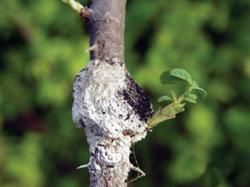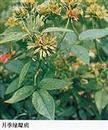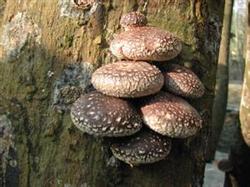Prevention and rejuvenation of rose aging

The aging phenomenon of rose is often manifested as thin branches and few flowers, dry branches after pruning, thin leaves and petals, yellowing and falling leaves, weak resistance to diseases and insect pests, etc. 1. Waterlogging is characterized by leaf yellowing and shedding, branch withering and partial root rot. It smells like vinasse. For seriously damaged plants or those difficult to eliminate waterlogging, they should be re-cut and dug up, and then planted after raising the terrain. For lightly affected plants, the method of piling soil at the base of the plant can be used to stimulate the root neck to produce adventitious roots, thus achieving the purpose of mitigation. 2. Leaf spot diseases and powdery mildew caused by diseases and insect pests and fungi cause a large number of leaves to fall off, affecting the formation of flower surface, and serious ones die because leaves cannot carry out photosynthesis. The pathogen began to infect from the end of May to the beginning of June, and the peak occurred during the rainy season from July to August. Starting at the end of May, the mixture of 0.3 to 0.5 degrees of stone sulfur was sprayed once a week for 2 to 3 consecutive times. If there are signs of serious outbreak from July to August, spraying 500 times of 40% thiram WP once a week for 3 consecutive times can effectively control it. If there is more rain, the spraying frequency should be increased accordingly. The damage caused by longicorn beetle was the most serious. From mid-June to July, cutting off the branches damaged by longicorn larvae is one of the key measures to control longicorn. If this link is not grasped, the larvae will bite into a trunk, which will increase the difficulty of control. Before and after the autumnal equinox and Qingming, the tree body was inspected, and the insect holes were injected with 80% dichlorvos emulsion 5 to 10 times, and then sealed with mud to kill the larvae of longicorn. Once other leaf-eating pests are discovered, 800 times of monocrotophos can be sprayed to kill eggs and larvae, effectively controlling leaf-eating pests. Third, fertilization leaves yellow, flowers less, flowers small and thin branches, is the performance of lack of fertilizer. Fertilizers are applied to the elements that are lacking, and other element fertilizers are applied at the same time to improve the utilization rate of the elements. For serious deficiency of certain elements, damage of roots, or application of trace elements, foliar fertilization should be carried out, and its concentration should be controlled at 0.3%-0.5%. Fertilization time selected in the evening, spraying from the back of the leaf. In order to improve the fertilizer utilization rate, plant vitality can be added to promote the plant to recover as soon as possible. In weak plants should be a small number of times, thin fertilizer frequently applied to prevent fertilizer damage. Under normal circumstances, rose flowers more, need a large amount of fertilizer. Basal fertilizer should be applied after winter pruning and before germination. Organic fertilizer should be applied to the crown diameter periphery at a depth of 20 to 30 cm. During the growing season, topdressing should be applied many times. Topdressing should be applied during leaf opening period, after full flower and early August. Available nitrogen, phosphorus and potassium should be applied. When the leaves are expanded, the new roots grow in large quantities, and a small amount of fertilizer should be applied, so as not to affect the growth of new roots. At the end of August, topdressing should be less nitrogen fertilizer and more phosphorus and potassium fertilizer to prevent autumn shoots from being too prosperous and frosty. Topdressing depends on plant size and growth, generally 100 to 150 grams per plant each time. Fourth, pruning is divided into growing season pruning and winter pruning. Growing season pruning one is to cut off pedicels and dead branches in time after flowering, and cut off rootstock tillers sprouting at the base of grafted plants. The other is to cut short 8 to 12 buds of the flowering branches 20 days after the previous flowering, and then high quality flowering branches can be obtained. Winter pruning is to promote full flow of nutrients in branches and leaves, preferably 3 to 4 weeks after frost. The general principle of pruning is to cut off diseased branches, thin branches, thin parallel branches, over-dense branches, inward branches, straight and oblique branches, weak trees and strong branches, strong trees and strong branches. Of course, the specific pruning method should also be treated differently depending on the variety model. ① The rose cultivated in groups should achieve colorful effect, requiring plant height and many flowers, not requiring extra large flowers, cutting height of 100 to 120 cm, and leaving 15 to 2 pairs of full and strong buds per branch. ② As a variety cultivation requirements short plants and large flowers, it is appropriate to cut low. Each plant leaves 3 to 5 main branches, each of which is 30 to 45 cm long and leaves 6 to 8 buds. 3. When vine rose is cultivated on the ground, if it only blooms once a year, it should cut off the flowering branches after flowering, leave the branches at the end of flowering and stimulate the new branches at the base to bloom next year. For those who bloom many times a year, cut off the top of the short branches that have bloomed after flowering, and leave 2 buds at the base to promote new lateral branches to bloom. A season of flowering, always maintain 5 to 7 branches, depending on the size of the space to determine the number of lateral branches reasonably, the lateral branches will remain 3 to 4 buds for flowering. When cultivated as a trellis or hedge, more main vines should be kept in order to achieve the effect of fullness and density, and the above pruning techniques can be applied to the first and second lateral branches to achieve flowering and luxuriant branches. ④ Shrub rose hedge, should meet the hedge appearance neat, branches dense leaves thick, flowers full color, not incomplete. Not only legs and other requirements, should be in the same plane using a "one-size-fits-all" pruning method, pruning time should be staggered flowers.
- Prev

Symptoms and control of rose green petal disease
Symptoms: mainly manifested as narrow petals, green sepals or leaves, corolla green, flowers into leaves, rose green petal disease is a typical symptom. All the plants with this disease, under the same cultivation and management conditions, the plant type is shorter than the general rose varieties, the branches are multiplied, the leaf shape is narrow, the petiole and stem are more economical.
- Next

Off-season cultivation techniques of Lentinus edodes
1. The cultivation site should be far away from the livestock and poultry barn, pollution-free, ventilated and cool, and close to the water source. The mushroom shed is cultivated in the open field or semi-underground. two。 The cultivation season is generally arranged in early December and in January. The mushrooms were produced from June to August of the following year. 3. Culture formula ① sawdust 78%, wheat bran 2.
Related
- Fuxing push coffee new agricultural production and marketing class: lack of small-scale processing plants
- Jujube rice field leisure farm deep ploughing Yilan for five years to create a space for organic food and play
- Nongyu Farm-A trial of organic papaya for brave women with advanced technology
- Four points for attention in the prevention and control of diseases and insect pests of edible fungi
- How to add nutrient solution to Edible Fungi
- Is there any good way to control edible fungus mites?
- Open Inoculation Technology of Edible Fungi
- Is there any clever way to use fertilizer for edible fungus in winter?
- What agents are used to kill the pathogens of edible fungi in the mushroom shed?
- Rapid drying of Edible Fungi

